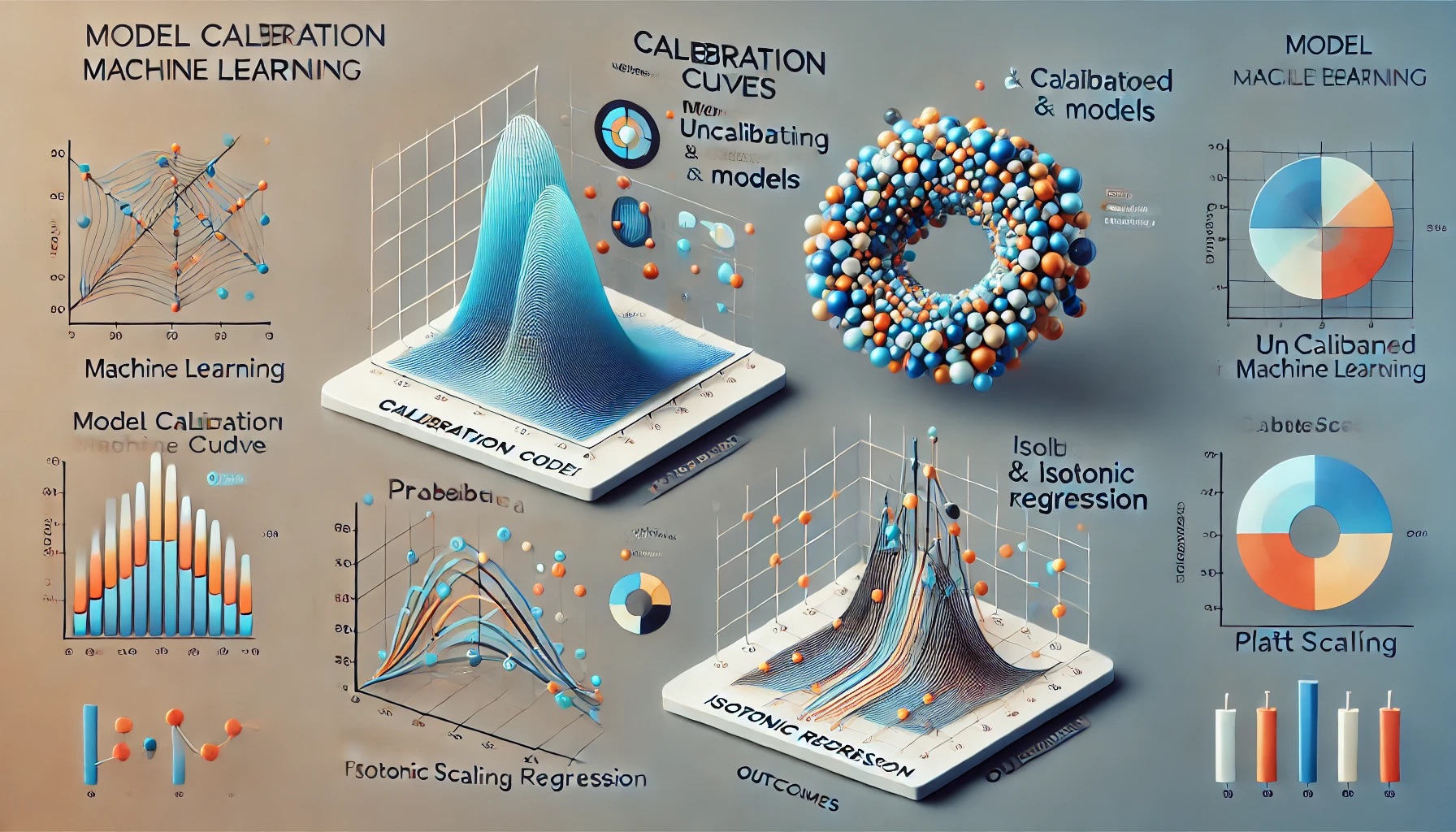How to Align with Model's Prediction with Real World Outcomes
 Juan Carlos Olamendy
Juan Carlos Olamendy
Imagine you're building a model.
You invest countless hours fine-tuning its parameters, enhancing its architecture, and optimizing its performance metrics.
But, after deployment, you notice that the model's predicted probabilities don't align with real-world outcomes.
This is where model calibration becomes invaluable.
It ensures that if a model predicts an event with a 70% probability, it should occur approximately 70% of the time in reality.
Let's dive into the intricate world of model calibration, exploring its importance, techniques, and practical applications.
Understanding Model Calibration
Model calibration is essential for any predictive system, ensuring that the predicted uncertainty reflects the actual uncertainty.
Calibration becomes crucial when building systems where reliability is paramount, such as recommender systems, medical diagnosis tools, and financial forecasts.
At its core, calibration refers to how well a model's predicted probabilities align with the actual observed frequencies of events.
A well-calibrated model produces probability estimates that accurately reflect the true likelihood of outcomes.
Consider a weather forecasting model that predicts a 70% chance of rain.
If it's well-calibrated, we'd expect it to rain on approximately 70 out of 100 days when this prediction is made.
However, if it only rains on 50 out of 100 such days, the model is poorly calibrated and tends to overestimate the probability of rain.
The Importance of Calibration
Calibration is crucial for several reasons:
Trust and Reliability: Well-calibrated models inspire confidence in their predictions, allowing users to make informed decisions based on the reported probabilities.
Risk Assessment: In high-stakes domains like healthcare or finance, accurate probability estimates are essential for proper risk management.
Decision-Making: Calibrated probabilities enable better decision-making processes, especially when weighing multiple options with different likelihood outcomes.
Model Comparison: Calibration provides a standardized way to compare the performance of different models beyond just accuracy metrics.
Techniques for Model Calibration
We can post-process trained models to enhance their calibration.
Several techniques exist for this purpose, including Platt Scaling and isotonic regression.
Platt Scaling
Platt Scaling is a simple yet effective method for calibrating binary classifiers.
Platt Scaling involves fitting a logistic regression model to the original model's outputs.
This method transforms the model's scores into probabilities, aligning them with the actual outcomes.
from sklearn.calibration import CalibratedClassifierCV
from sklearn.svm import SVC
# Train an SVM classifier
svm = SVC(probability=True)
svm.fit(X_train, y_train)
# predicted probabilites of the base model
y_pred_base_proba = svm.decision_function(testX)
# Apply Platt Scaling
platt_calibrated = CalibratedClassifierCV(svm, method='sigmoid', cv=5)
# fit the calibrated model using using k-fold cross-validation (5 folds)
platt_calibrated.fit(X_train, y_train)
# Use the calibrated model for predictions
y_pred_platt_proba = platt_calibrated.predict_proba(X_test)
Ensemble Methods
Ensemble methods can naturally lead to better-calibrated predictions by combining multiple models.
Techniques like Bayesian Model Averaging (BMA) or bootstrapped ensembles often produce more reliable probability estimates.
from sklearn.ensemble import RandomForestClassifier
# Create an ensemble of models
n_estimators = 100
ensemble = RandomForestClassifier(n_estimators=n_estimators)
ensemble.fit(X_train, y_train)
# Generate predictions
ensemble_probs = ensemble.predict_proba(X_test)
Evaluating Calibration Performance
To assess the calibration of a model, several metrics and visualization techniques are commonly used.
And remember, if you like this article, share it with others ♻️
Would help a lot ❤️
And feel free to follow me for articles more like this.
Calibration Curve
To measure a model’s calibration, a simple method is counting.
Count the number of times your model outputs a particular probability and the frequency of that prediction coming true.
Plotting these values against each other should ideally form a straight line, indicating perfect calibration.
In scikit-learn, you can plot the calibration curve of a binary classifier using the calibration_curve method.
This curve visualizes the relationship between predicted probabilities and actual outcomes, helping assess the model's calibration.
from sklearn.calibration import calibration_curve
import matplotlib.pyplot as plt
def plot_calibration_curve(y_true, y_prob, n_bins=10):
prob_true, prob_pred = calibration_curve(y_true, y_prob, n_bins=n_bins)
plt.plot(prob_pred, prob_true, marker='o')
plt.plot([0, 1], [0, 1], linestyle='--')
plt.xlabel('Predicted Probability')
plt.ylabel('True Probability')
plt.title('Calibration Curve')
plt.show()
plot_reliability_diagram(y_test, y_pred_base_proba)
plot_reliability_diagram(y_test, y_pred_platt_proba)
Brier Score
The Brier Score measures the mean squared difference between predicted probabilities and actual outcomes.
A lower Brier Score indicates better calibration.
from sklearn.metrics import brier_score_loss
base_brier_score = brier_score_loss(y_test, y_pred_base_proba)
print(f"Base Brier Score: {base_brier_score:.4f}")
platt_brier_score = brier_score_loss(y_test, y_pred_platt_proba)
print(f"Platt Brier Score: {platt_brier_score:.4f}")
Conclusion
Model calibration is a critical aspect of developing reliable predictive models.
By ensuring that a model's predicted probabilities align with actual outcomes, calibration enhances trust in the model's predictions.
Techniques like Platt Scaling and Isotonic Regression offer effective ways to achieve this alignment.
Incorporating calibration into your modeling workflow can significantly improve the reliability of your predictions, especially in high-stakes applications.
By understanding and applying calibration techniques, you can develop models that not only perform well but also provide accurate and trustworthy probability estimates.
Model calibration transforms a good model into a great one, bridging the gap between confidence and accuracy.
Start calibrating your models today to unlock their full potential.
PS:
If you like this article, share it with others ♻️
Would help a lot ❤️
And feel free to follow me for articles more like this.
Subscribe to my newsletter
Read articles from Juan Carlos Olamendy directly inside your inbox. Subscribe to the newsletter, and don't miss out.
Written by

Juan Carlos Olamendy
Juan Carlos Olamendy
🤖 Talk about AI/ML · AI-preneur 🛠️ Build AI tools 🚀 Share my journey 𓀙 🔗 http://pixela.io